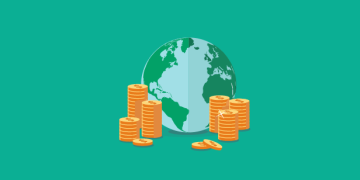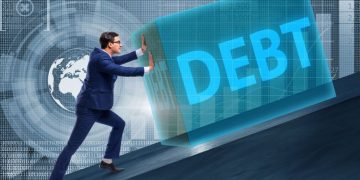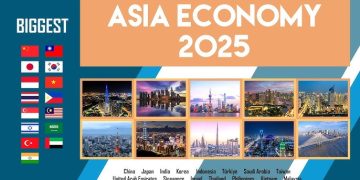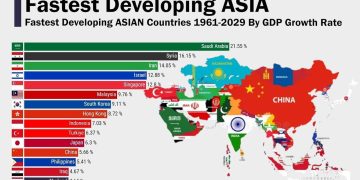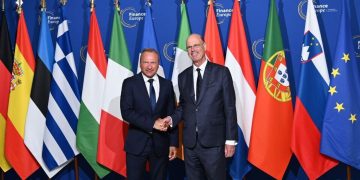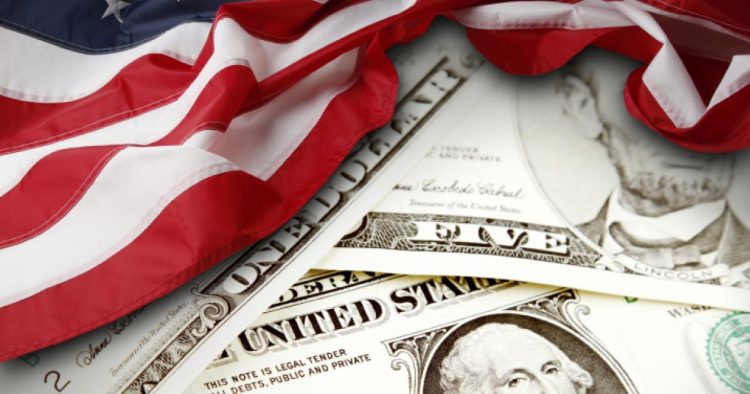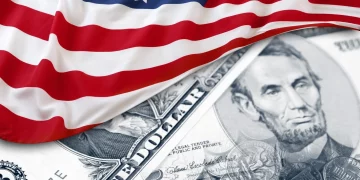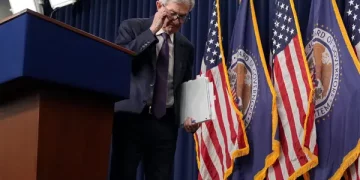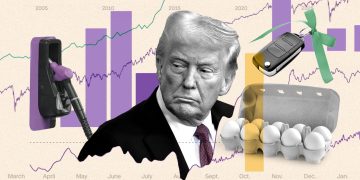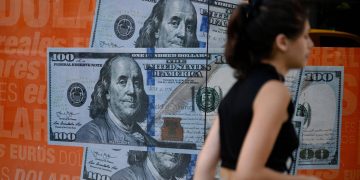Inflation, Rates & The Fed’s Dilemma: Navigating Transition in U.S. Monetary Policy
1. The End of an Era of Certainty
In the aftermath of one of the most aggressive tightening cycles in modern history, the Federal Reserve stands at a crossroads. The policy rate — which peaked near 5.5% in 2024 — has begun to bite, cooling credit, slowing investment, and flattening consumer demand. Yet the inflation dragon has not been fully slain.
By mid-2025, headline CPI hovers around 2.9%, while core inflation, driven by sticky services and housing costs, remains closer to 3.1%.
The Fed’s challenge is no longer merely about “fighting inflation,” but about navigating transition — from emergency restraint to sustainable equilibrium. Every move is a balancing act between credibility and flexibility, price stability and growth.
2. Inflation’s New Anatomy
Unlike the textbook post-crisis inflationary bursts of the past, today’s price dynamics are structurally different. Three components explain why inflation remains stubborn even as demand cools:
- Service sector inertia: The biggest source of price stickiness lies in services — healthcare, housing, and education — which are less sensitive to rate hikes and more driven by labor costs.
- De-globalization effects: The re-routing of global supply chains, increased tariffs, and “friend-shoring” have raised import prices and reduced efficiency gains once provided by global integration.
- Energy and climate volatility: Weather shocks, green-transition costs, and geopolitical disruptions in oil supply (notably in the Middle East) continue to inject volatility into energy prices.
This new inflation anatomy is what Fed officials call “structural stickiness” — inflation embedded in the very fabric of the post-pandemic economy.
3. The Great Divide Inside the Fed
The Federal Open Market Committee (FOMC) is now divided between two camps:
- The Hawks (led by governors like Christopher Waller and regional presidents from St. Louis and Dallas): They argue that premature easing risks reigniting inflation expectations.
- The Doves (including Mary Daly and Austan Goolsbee): They fear that holding rates too high for too long could push the economy into a mild recession and damage the labor market irreversibly.
Chair Jerome Powell remains the cautious referee, signaling patience: “We’re not declaring victory. We’re observing progress.”
This internal divide reflects a deeper philosophical question: should the Fed treat inflation as a cyclical or structural problem? The answer will shape global liquidity for years.
4. Consumers and Credit: The Silent Strain
The human side of high rates is becoming visible. Credit card delinquencies are at their highest since 2011. Mortgage affordability has dropped to record lows, freezing home sales.
Small business loan approvals have fallen sharply, as banks tighten lending standards in response to capital constraints and regulatory stress tests.
A 2025 Federal Reserve survey shows that nearly 40% of households feel worse off financially than a year earlier — a stark contrast to 2021’s optimism.
This strain, though gradual, poses a latent risk: if household sentiment turns sharply, consumption — still 68% of U.S. GDP — could slip further, amplifying slowdown pressures.

5. Global Ripples of the Fed’s Choices
The Fed’s decisions are never confined to U.S. shores. Every adjustment in its rate path reverberates across global capital markets.
Emerging markets, which saw massive capital inflows in early 2024 as inflation cooled, are once again under pressure as U.S. yields remain elevated.
Currencies from Brazil to Indonesia have weakened slightly, while the Japanese yen continues to face depreciation pressure, forcing the Bank of Japan to intervene sporadically.
In Europe, the ECB’s delayed rate cuts have widened trans-Atlantic yield differentials, drawing investment back toward U.S. assets.
Meanwhile, the dollar’s dominance — though questioned by some analysts — remains unchallenged for now, bolstered by America’s deep financial markets and relative macro stability.
6. The Path to Easing: Slow, Conditional, and Data-Dependent
Markets crave clarity, but the Fed is delivering nuance.
While investors price in two quarter-point cuts by late 2025, the Fed has made clear that easing will be “data-dependent, not calendar-dependent.”
Three conditions will determine the pace of rate normalization:
- Core inflation sustainably below 2.5%.
- Labor market rebalancing without sharp job losses.
- Stable financial conditions — no systemic stress events.
Even if these are met, the Fed is unlikely to return to the near-zero rate regime of the 2010s. Instead, analysts expect a “higher-for-longer” baseline — a new normal where neutral rates (r*) settle closer to 2.75%–3.0%, reflecting a structurally tighter global economy.
7. The Politics of Monetary Patience
Monetary policy in 2025 is no longer an academic exercise; it’s a political battlefield.
As the U.S. presidential election approaches, both parties are pressuring the Fed in subtle ways: one side calling for relief to households and small businesses, the other warning against “losing the war on inflation.”
Powell’s Fed, fiercely protective of its independence, faces the delicate task of preserving legitimacy amid public fatigue with high borrowing costs.
The political optics of “holding firm” could become as consequential as the economics.
8. The Long Shadow of Quantitative Tightening
While interest rate policy dominates headlines, the balance sheet runoff continues quietly in the background.
Since 2022, the Fed has reduced its holdings of Treasuries and mortgage-backed securities by over $1.3 trillion, draining liquidity from the system.
This has tightened financial conditions more than nominal rates alone suggest, particularly in housing and equity markets.
Some economists now argue that QT has done half the tightening job — implying that the Fed could afford to pause rate hikes earlier than markets expect.
However, unwinding QT too quickly risks reigniting asset bubbles, leaving policymakers once again trapped between caution and stimulus.
9. Lessons from History — and a Path Forward
Every generation of central bankers faces a defining test. For the post-pandemic Fed, the test is not simply inflation control, but economic navigation in an age of uncertainty.
The lessons of the 1970s (premature easing) and the 2010s (excessive liquidity) loom large. Yet, the present challenge is different: a structurally changing economy with evolving supply-side dynamics.
The Fed’s future success will depend on three things:
- Credibility through transparency — clear communication of goals and conditions.
- Coordination with fiscal policy — ensuring that government spending and borrowing do not undermine monetary restraint.
- Adaptation to structural inflation — understanding that energy transition, de-globalization, and technology will keep price dynamics volatile.
10. Conclusion: The Age of Pragmatic Central Banking
The age of certainty is over.
In its place rises a new era of pragmatic central banking — where data, humility, and resilience matter more than ideology.
The Federal Reserve’s dilemma is no longer whether to tighten or ease, but how to guide an economy in transition without breaking its spine.
If the Fed succeeds, the 2020s may be remembered not as the decade of inflation, but as the period when economic stability was redefined for a new world — one where flexibility is the ultimate form of strength.





